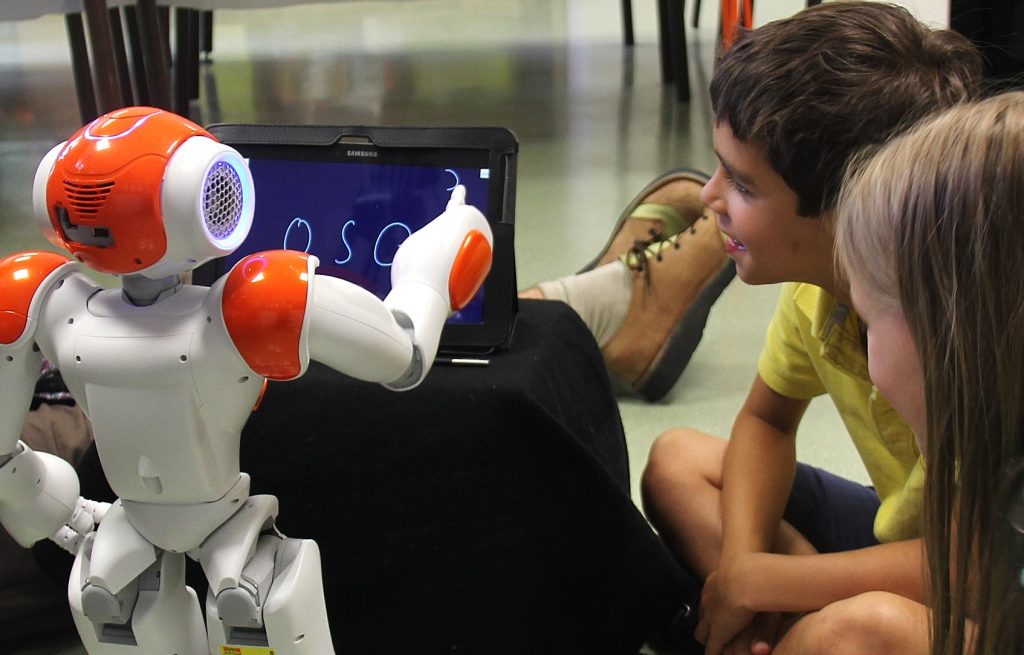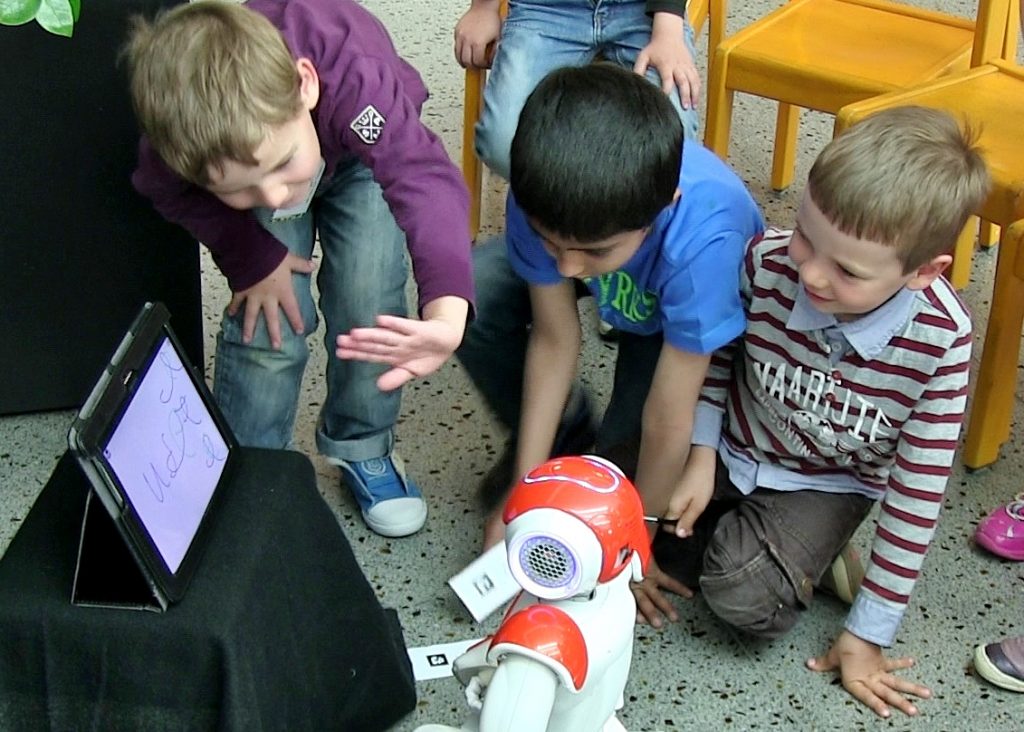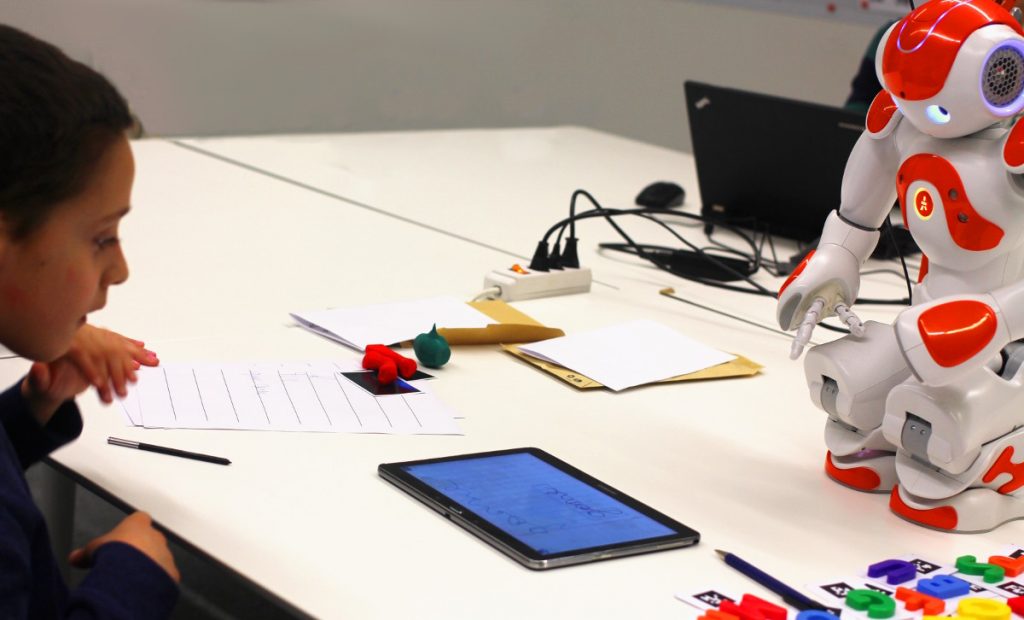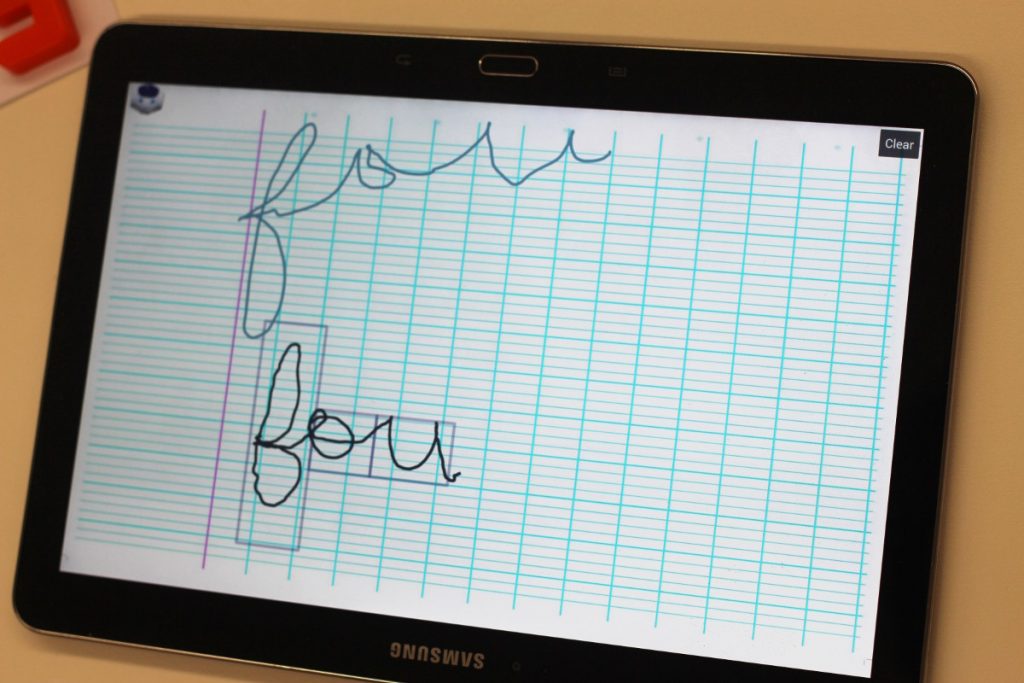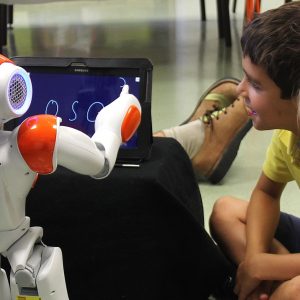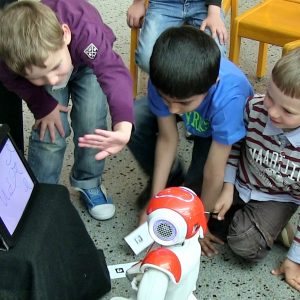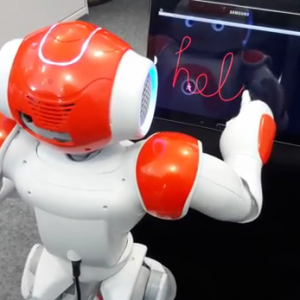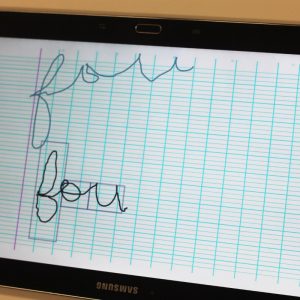Learning to write with a robot
The CoWriter Project and its active follow-up iReCHeCk aim at exploring how a robot can help children with the acquisition of handwriting, with an original approach: the children are the teachers who help the robot to write better! This paradigm, known as learning by teaching, has several powerful effects: it boosts the children’ self-esteem (which is especially important for children with handwriting difficulties), it gets them to practice hand-writing without even noticing, and it engages them into a particular interaction with the robot called the Protégé effect: because they unconsciously feel that they are somehow responsible if the robot does not succeed in improving its writing skills, they commit to the interaction, and make particular efforts to figure out what is difficult for the robot, thus developing their metacognitive skills and reflecting on their own errors.
- Tech Xplore – A social robot to enhance children’s handwriting skills
- Wall Street Daily – The Robot That Teaches Kids How to Write
- Reuters – Children learn to write by teaching robots
- 3Sat Nano – Den Schwächsten beim Lernen helfen [TV broadcast]
- Teacher Magazine – Learning by teaching … a robot
- The Hechinger Report – Kids teaching robots: Is this the future of education?
- SRF Einstein – Schlechte Schüler lehren Roboter schreiben [TV broadcast]
- Aldebaran – Discover the project CoWriter in 6 questions with Séverin Lemaignan
- La Télé – Robot, mon ami? [TV broadcast]
- RTS – News hi-tech [radio broadcast]
- La Recherche – Apprendre à écrire avec un robot
- Les voix du monde – CoWriter, l’école des robots où les «instits» sont les enfants – RFI
- Fast CoExist – This Little Handwriting Robot Helps Kids Learn By Letting Them Be Teachers
- Futura-Science – Nao, le robot qui aide les enfants à l’école
- Les Numériques – CoWriter: quand des enfants enseignent l’écriture aux robots
- Robotic Today – CoWriter: Children Using Robots To Learn Writing
- Libération – Apprendre à écrire en l’enseignant à un robot
- TDG – EPFL: Enfant et robot apprennent à écrire ensemble
- Sciencesetavenir.fr – Le robot Nao apprend à écrire aux enfants
- Discovery News – In Robo Reversal, Kids Learn By Teaching Robots
- Gizmag – Robotic student helps kids learn to write
- Bengalore Mirror – When kids become the ‘teachers’ to robots…
- Shiny Shiny – Teaching skills to robots helps children learn
- Arc Info – Cowriter: un système d’apprentissage basé sur une collaboration entre le robot et l’enfant
- La Regione Ticino – Il robot somaro
- Le Temps – Un auxiliaire d’écriture
- 24 Heures Lausanne – Enfants et robots réunis pour apprendre à écrire
- Tages-Anzeiger – Der schwächste Schüler in der Klasse ist ein Roboter
- Basler Zeitung – Der schwächste Schüler in der Klasse ist ein Roboter
- Berner Zeitung – Schreiben lernen mit dem Roboter
- Le Matin – Recherche: Un robot de l’EPFL apprend l’écriture aux enfants
- Le Nouvelliste – Cowriter: un système d’apprentissage basé sur une collaboration entre le robot et l’enfant
- 20 Minutes – Ils apprennent à écrire grâce à un robot
- 20 Minuten Zürich – Schreiben lernen dank Roboter
- Phys.org – Kids and robots learn to write together
- Techtimes – Can Robots Help Teach Children How To Write?
- Sydney Morning Herald – Writing robots give kids a hand
- Nanowerk – Kids and robots learn to write together
- Freiburger Nachrichten – Roboter hilft beim Schreiben
- St. Galler Tagblatt – Lernen beim Lehren
- Walliser Bote – Schöne Buchstaben
- RTS – Un robot pour apprendre à lire et à écrire
- Le Temps – Robots à l’EPFL: NAO, le professeur d’écriture
- Panorama – EPFL Annual Report 2015
- The Long and Short – Learning to read with Mr Robot
Handwriting disorder (termed dysgraphia) is a far from a singular problem as nearly 8.6% of the population in France is considered dysgraphic. With the increase of cognitive demands of school work, handwriting rapidly becomes a limiting task for these children, who cannot handle simultaneous tasks such as handwriting, grammar, orthography, and composition, and who may thus rapidly face general learning difficulties. It is therefore crucial to detect and remediate handwriting difficulties as soon as possible.
At the moment, the detection of dysgraphia is performed through a standard test called BHK. This detection is laborious because of its high cost and subjectivity.
Please note that the publication lists from Infoscience integrated into the EPFL website, lab or people pages are frozen following the launch of the new version of platform. The owners of these pages are invited to recreate their publication list from Infoscience. For any assistance, please consult the Infoscience help or contact support.
